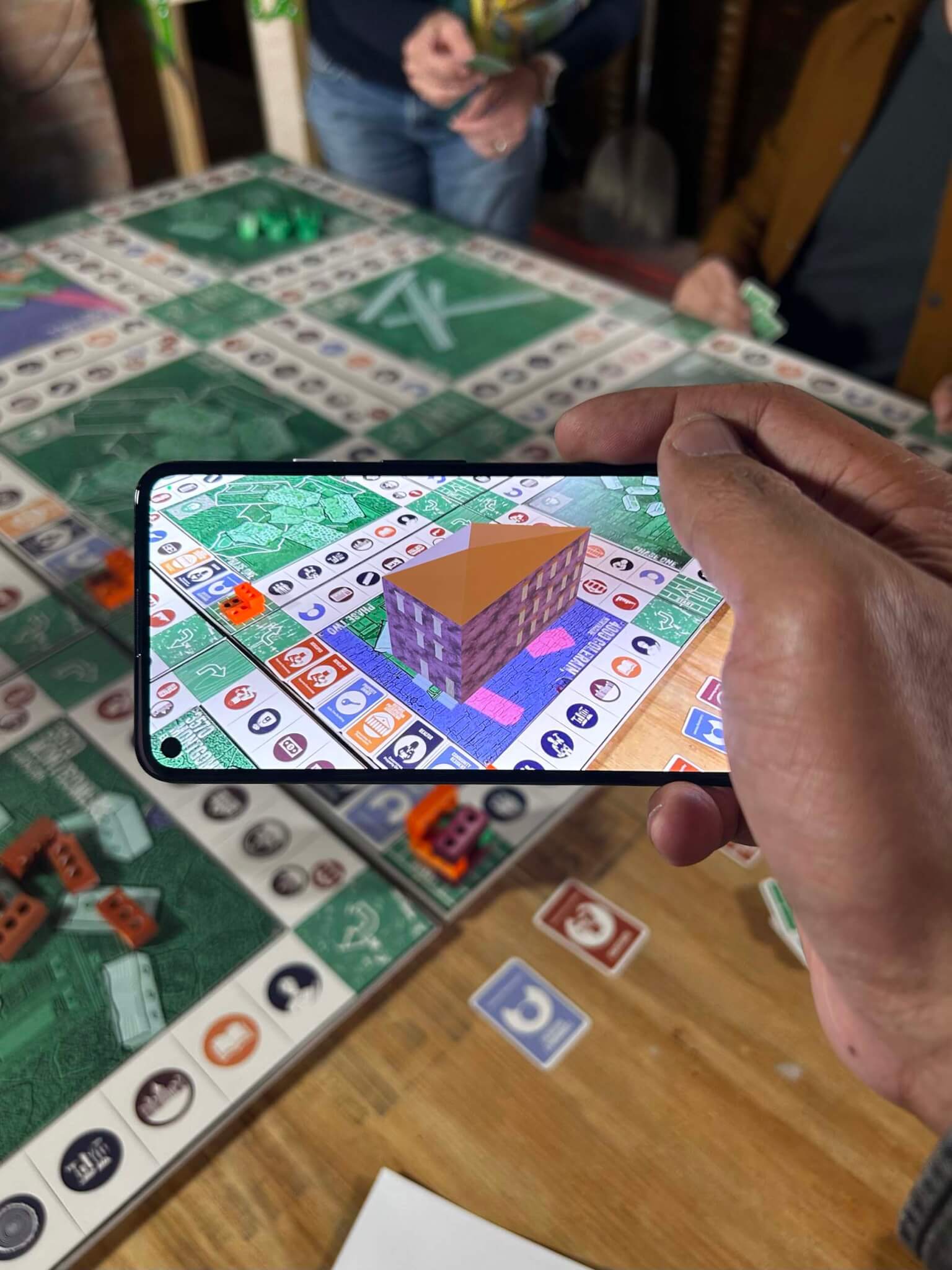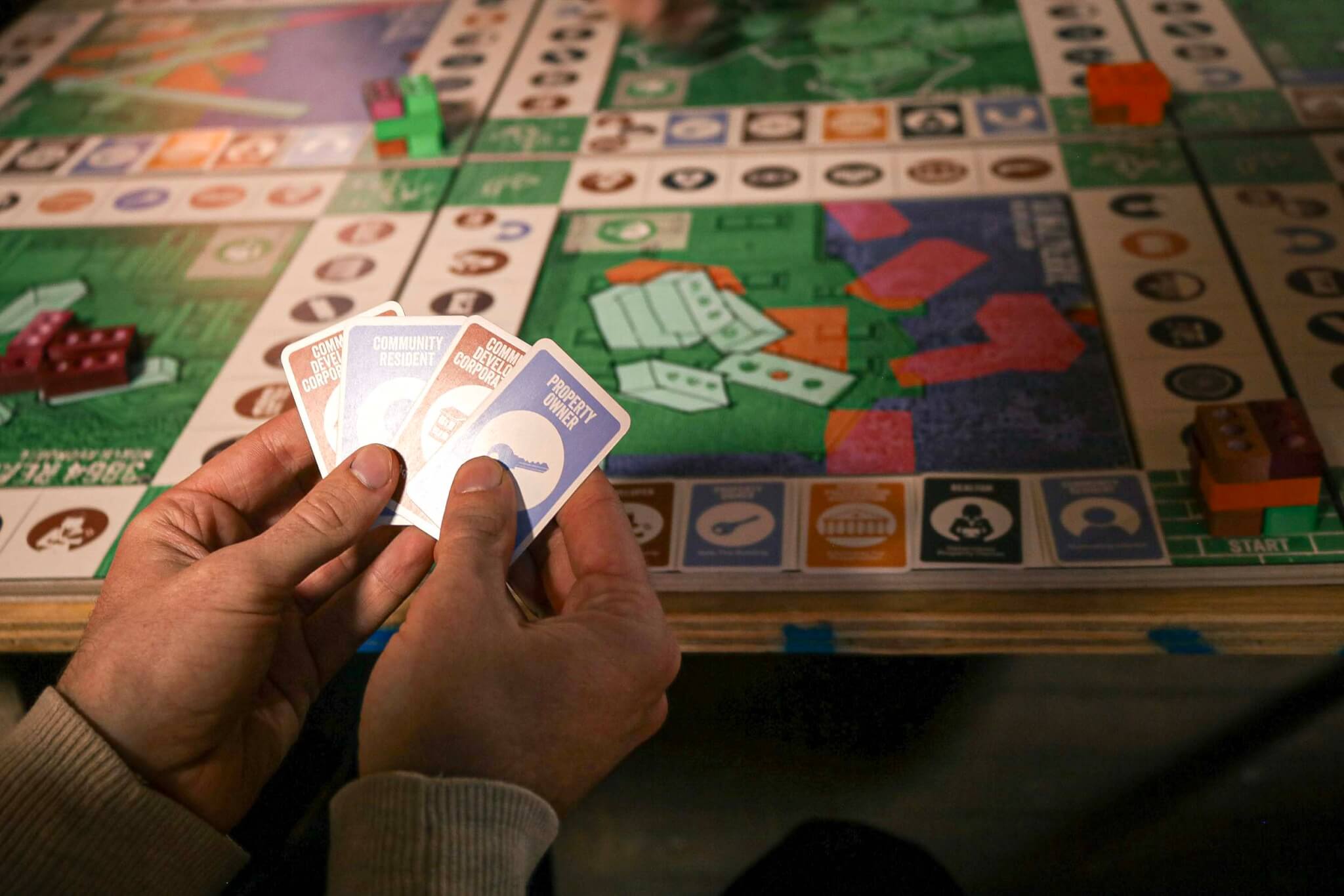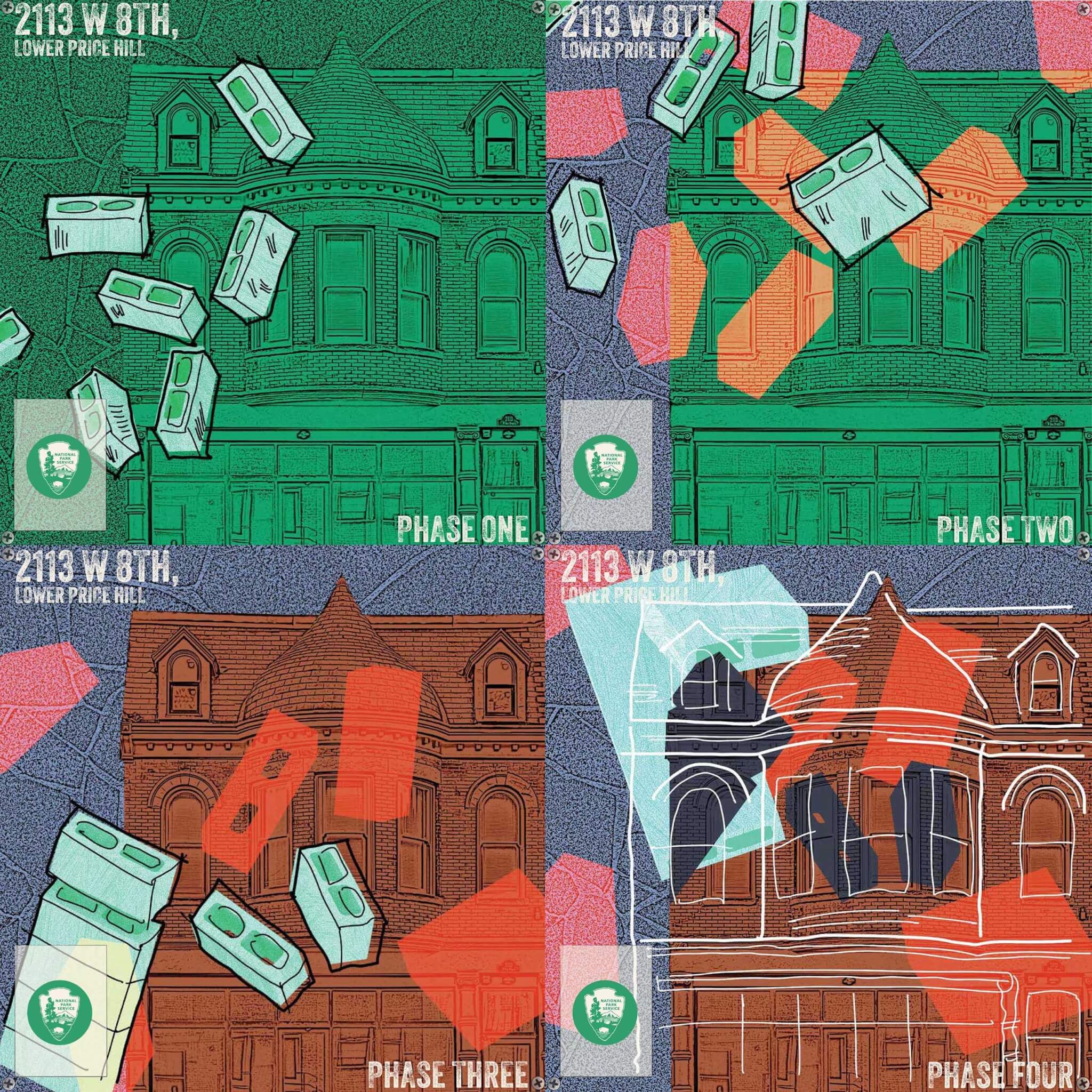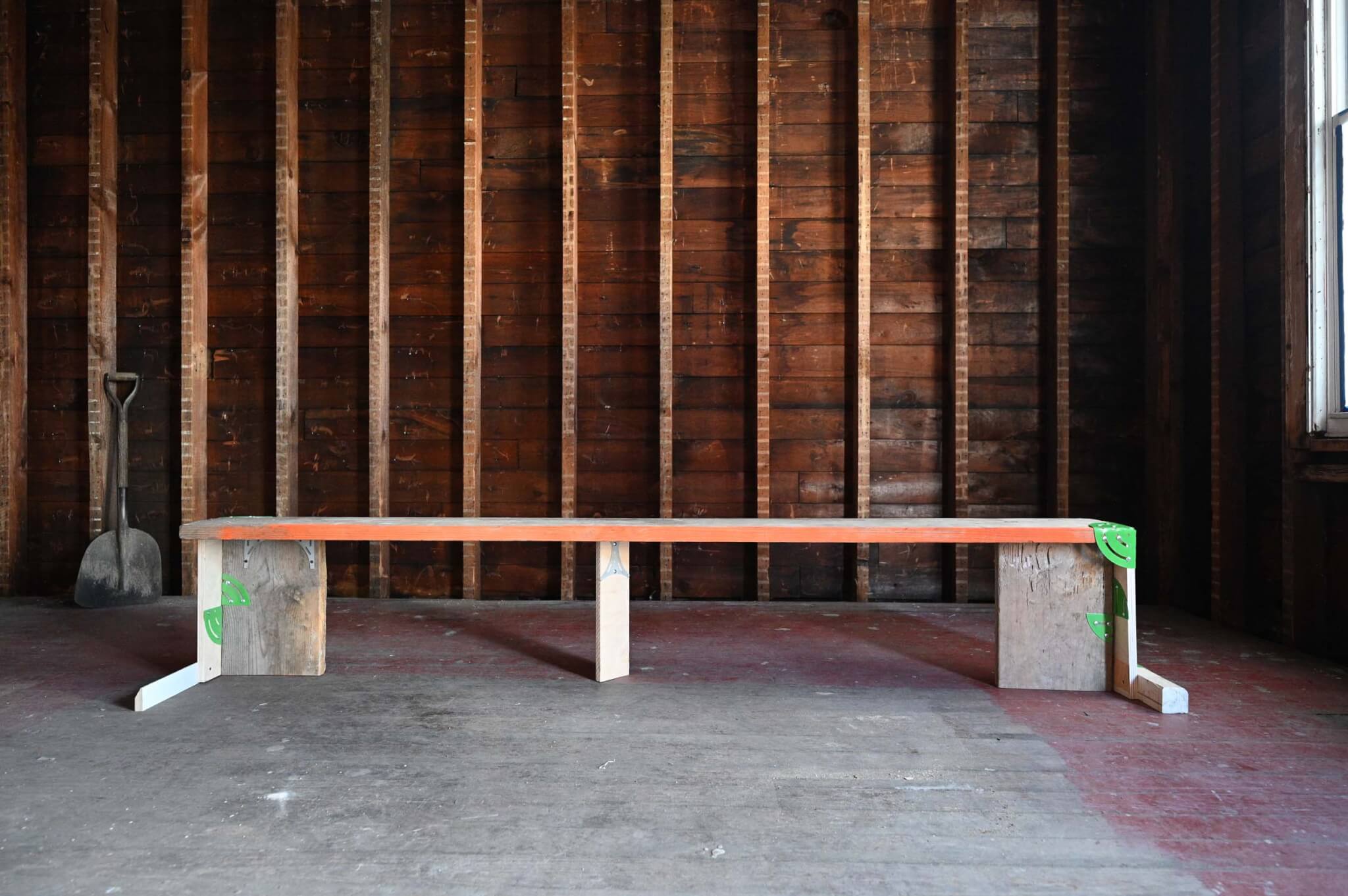In November, a crowd gathered in a vacant 2-story house under renovation by artist Mark de Jong in the Camp Washington neighborhood of Cincinnati. Inside the house, spotlights illuminated the exposed wood stud walls, unfinished floors, and temporary furniture assembled from sheets of plywood, piles of CMU blocks, and pieces of dimensional lumber salvaged from the house. Members of the city’s development authority, leaders of local community development corporations, and directors of building preservation nonprofits and businesses were there to participate in Holding Pattern, a workshop designed by our practices (Rebuild Collective and EXTENTS) to engage the public in the hidden processes of vacant building reuse.
Founded in 1788, Cincinnati is known for its abundance of extant historic building styles, propagated by waves of immigrant groups in the 19th century. During the 20th century, the city experienced population decline due to urban renewal, deindustrialization, and suburbanization, all contributing to a glut of vacant buildings. The dual presence of historic and vacant buildings spread across the city’s 52 neighborhoods has resulted in unique partnerships between municipal and resident initiatives to restore these buildings for new uses.
One example is the Historic Structure Stabilization Program (HSSP), administered by the Port of Greater Cincinnati Development Authority. The HSSP directs funding toward stabilizing deteriorating buildings of historic significance to spur their reuse. Under this program, more than fifty structures have been saved from demolition and stabilized by the city, creating opportunities for local developers, nonprofits, and community development corporations to collaborate on their reuse. Yet, the processes affecting vacant buildings largely remain hidden behind boarded-up facades, and few city residents have the knowledge or resources to contribute.

Rebuild Collective and EXTENTS are interested in how creative applications of architectural tools can grow public awareness, knowledge, and participation in local reuse ecosystems. Previously, we organized and co-designed the Build a Chair = Reframe a House workshop for Detroit residents renovating houses purchased from the Detroit Land Bank Authority. In that workshop, we combined parts of model-making, mock-up building, and virtual world-making to teach participants the basics of framing a house. Building on lessons from our first workshop, Holding Pattern further extends those tools to create a replicable workshop that can activate vacant buildings across Cincinnati and engage residents and stakeholders in the communities where those buildings are located.
The name Holding Pattern refers to the period of abandonment during which vacant buildings are subject to both human and non-human forces of change. To inform workshop participants of what happens during this period, we created an eponymous multimedia board game, developed from over a year of research and conversations with local organizations involved in vacant building reuse. Players embody different actors to bring a simulated urban grid of unoccupied structures through four chronological phases of building reuse: acquiring ownership, determining use, securing financing, and completing construction. Players compete and collaborate to earn points for successfully bringing buildings through each phase before actor cards run out. The game not only fosters connection and understanding between participants who have to embody other actor roles, but also highlights common forces tying individual vacant buildings to a broader ecosystem of building reuse.

Much like our previous workshop in Detroit, Holding Pattern consists of physical and digital components designed to work together. Participants sit around a game board composed of stacks of tiles each representing a vacant building that the Cincinnati Port has stabilized in preparation for reuse. Each tile in a stack is paired with an augmented reality (AR) model of a corresponding building that changes appearance as it advances through the phases. We designed a “marker-based” augmented reality experience where players must scan a “marker” (in our case, a custom tile) that triggers an AR model to appear in the software. The markers must be unique, nonrepetitive, and high contrast for the image recognition to work properly, and abiding by this requirement across all tile stacks allows multiple AR models to appear simultaneously. Thus, we developed a graphic language for the game board that intermixes hand drawings, digital renderings, and modified photographs so there is enough variation to not confuse the software. To maintain visual cohesion amid so many changing elements, we derived a unifying color palette from the brick facades of our reference buildings. Viewed on either a mobile device or a large projection screen, the AR models allow players to engage the distinctive architecture of these vacant and often historically significant structures.

While we could have made tiles just showing photographs of the buildings, we value the processes of translation and recognition the AR models afford. Photographs of vacant buildings can carry with them assumptions that hinder our ability to see the architecture otherwise—for example, consider the cultural fascination with “ruin porn” and how these images of urban decay convince viewers of a more “authentic” state to which a building could be returned. Many vacant buildings in Cincinnati, however, are not in decay and are actively being redeveloped and renovated. By translating these structures into digital models, we can assume a more projective and playful approach and demonstrate their yet-to-be-realized potential.
Furthermore, the relative novelty of augmented reality is still exciting for people, and presenting workshop participants with a new version of a recognizable building can fuel their imagination. Most importantly, the hybrid gaming setup allows for different vacant structures scattered across the city to coexist on the same plane, making it apparent that these buildings belong to a larger reuse ecosystem and should be considered in relation to one another. The alternative urbanism suggested by our game board encourages collaboration among players who we hope will contemplate more unconventional uses for this latent architectural network.

Moving forward, we intend to make incremental adjustments to our hybrid workshop each time we stage it in a new location. For instance, swapping out different actors and buildings could allow conversations on reuse to be increasingly specific to the communities of participants who play the game. We also aspire to improve the workshop’s augmented reality component, so it is more accessible and informative. When we conceptualized the AR part, we were thinking about buildings as “informational objects” and how digital tools could not only help communicate the hidden aspects of architectural reconstruction but also reconstruct an image of the city itself. All in all, we are excited to keep developing our hybrid workshop, and we invite readers interested in collaborating on the question of building reuse to reach out and pull up a seat at the table.
Cyrus Peñarroyo is a partner in the Ann Arbor, Michigan–based design practice EXTENTS and teaches at the University of Michigan’s Taubman College.
De Peter Yi is assistant professor of architecture at the University of Cincinnati, and founder of Rebuild Collective, an architectural research and design studio.
Project Credits
-
- Research and Game Development: De Peter Yi, Wendy Hahn, Zachary Lewis, Liv Adkins, Anneke Hoskins
- Workshop Furniture Fabrication: De Peter Yi, James Hummeldorf
- Augmented Reality: Cyrus Peñarroyo, Xuanshu Lin
- Project Support: University of Cincinnati Office of Research Coalition for Change Research Program and University of Michigan TVLab Fund for Experimental Inquiry
→ Continue reading at The Architect's Newspaper
